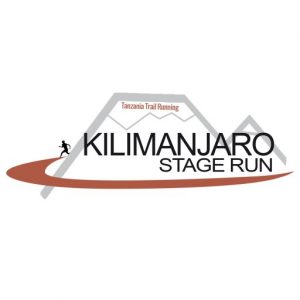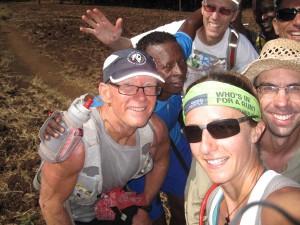Jan-2016
Training tips by Simon Mtuy
 There is no doubt the Kilimanjaro Stage Run is challenging. Total elevation gain is more than 35,000 feet (10 668 meters) and the entire route is run at an altitude between 4,500 and 7,000 feet (1 370 to 2 135 meters). You have to be prepared for long days – at least five of the eight days you will be on the trail for more than six hours. While the elevation and cloud cover mitigate the tropical heat, you will experience direct sun (Kilimanjaro is 3 degrees south of the equator) in open stretches with temperatures reaching 85 to 90 degrees Fahrenheit (29 to 32°C).
There is no doubt the Kilimanjaro Stage Run is challenging. Total elevation gain is more than 35,000 feet (10 668 meters) and the entire route is run at an altitude between 4,500 and 7,000 feet (1 370 to 2 135 meters). You have to be prepared for long days – at least five of the eight days you will be on the trail for more than six hours. While the elevation and cloud cover mitigate the tropical heat, you will experience direct sun (Kilimanjaro is 3 degrees south of the equator) in open stretches with temperatures reaching 85 to 90 degrees Fahrenheit (29 to 32°C).
That is why Simon Mtuy, professional trail runner, director and lead guide of the KSR, requires every participant to complete a form detailing their running background – to make sure they have the experience and fitness to succeed.
If you have been approved to participate in the Kilimanjaro Stage Run it’s because you have shown that you are an experienced ultra distance runner with endurance races and long training runs in your history. It means you should also have a good understanding of your own body’s hydration and nutritional needs during an endurance event.
To complement your existing knowledge, Simon would like to share with you some recommendations and advice specific to the Kilimanjaro Stage Run. If you follow them, you will be positioned to reap greater rewards from the experience!
Train with similar conditions!
On the KSR route, you run on dirt trails and roads. There are no flat sections. Inclines range from gentle to extremely steep climbs and descents, with sections of rugged, narrow, slippery, rocky, or non-existent trails.
- Train on hilly and rough trails
The weather condition on KSR can be cool to hot, bone dry to damp and wet
- Train in all types of weather.
You run upwards of 30km every day. Speed is not important but pacing is.
- Long distance running training will strengthen your legs
- Find your pace. Do not over-tax your body early, only to break down as the mileage adds up or to become too sore or too stiff to undertake another long run the following day.
The combination of elevation, temperature, vertical gain and descent, and rough trails means it is common to take 6-8 hours to cover 20 miles (32km). Recovery is also an important aspect of your training.
- Train for several hours in a row to learn the hydration, energy (food) intake, and electrolyte replacement strategies that work best for you to sustain you for each day’s run and help you recover and be strong for the next day.
- Train with the gear and the drinking/eating routine you will use during the KSR.
Follow Simon’s training program!
Here is a weekly program of intense training used and recommended by Simon in preparation for the rigors of the KSR:
Monday: rest day, or 30 – 45 minutes easy
Tuesday: 60 to 90 minutes
Wednesday: 2 to 4 hours
Thursday: 30 – 45 minutes easy
Friday: 60 to 90 minutes
Saturday: 4 to 6 hours
Sunday: 3 to 4 hours
And in the end, remember . . . to have fun!
The KSR is not a race but a fun run for exploration, adventure, camaraderie, and challenging your limits. The better physically and mentally prepared you are before coming to Tanzania, the more fun you will have on the trails around Kilimanjaro!


comment this post